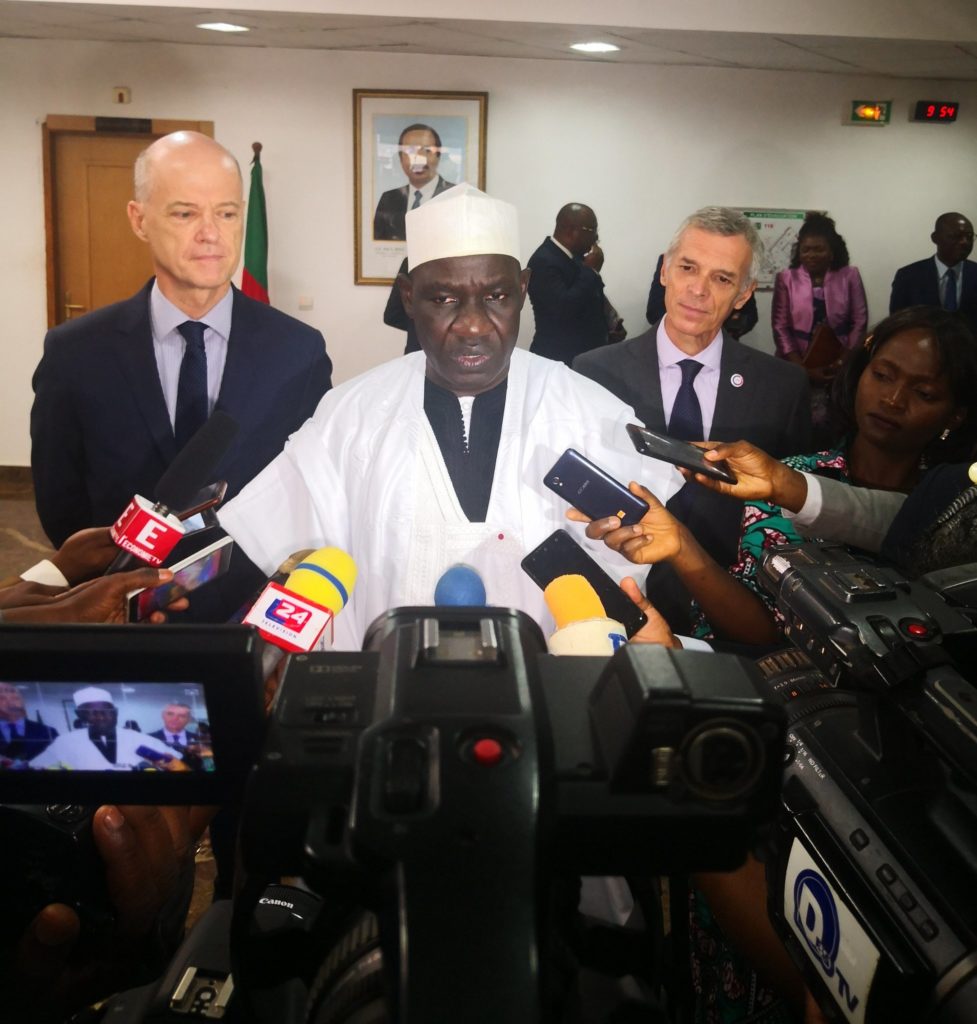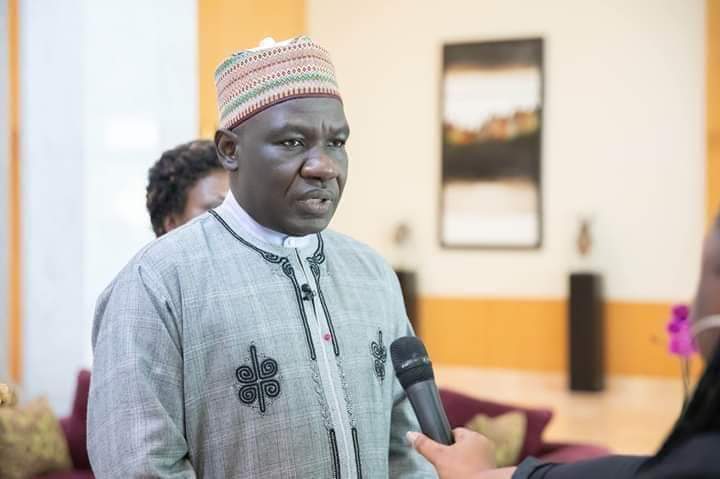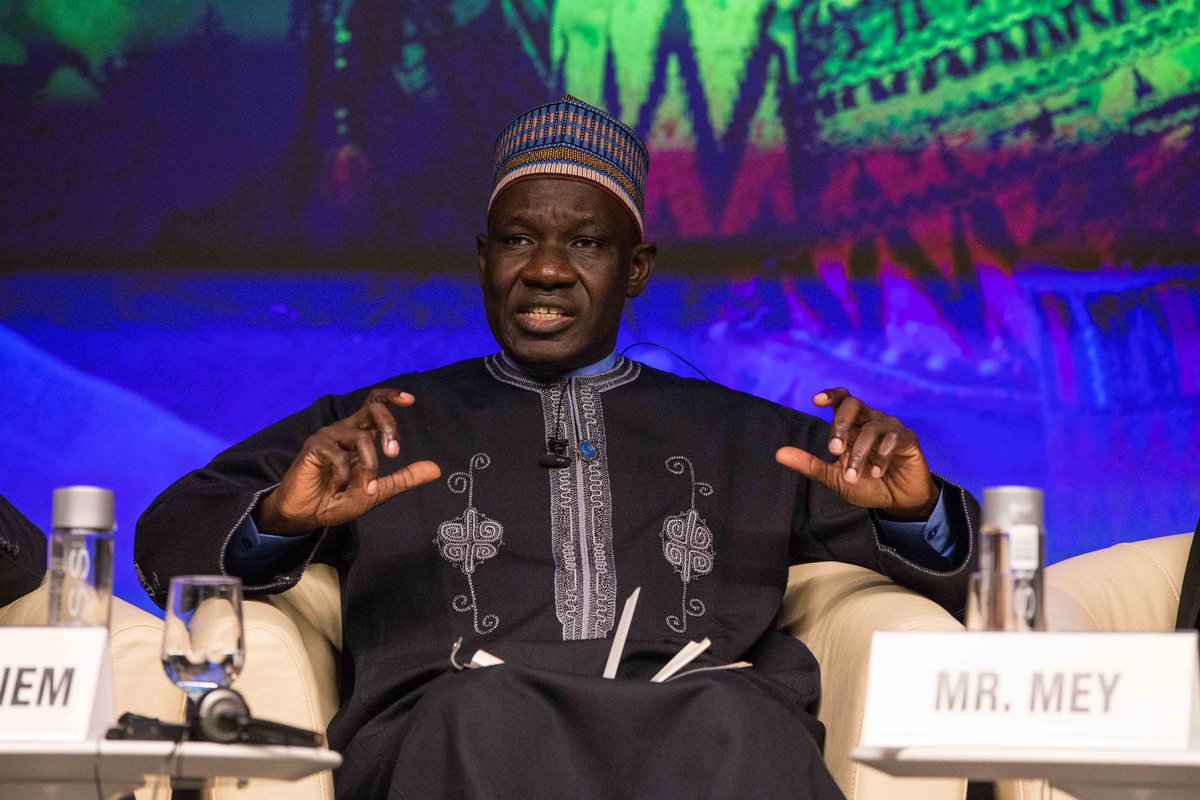Beginning of implementation, harmonization with the budget and post-Covid recovery plan, reforms, financing, risks, monitoring-evaluation… the Minister of Economy, Planning and Regional Development Alamine Ousmane MEY who steered the formulation of the National Development Strategy and ensures its implementation follow-up, throws more light on shadow areas.
The 2020-2030 National Development Strategy (NDS30) was presented to the general public on 16 November 2020. When is its implementation scheduled to begin?
In fact, the National Development Strategy (NDS30), the new reference framework for the action of Govern- ment, Regional and Local Authorities and technical and financial partners, was adopted by Government during the Cabinet Meeting held on 28 November 2019 and presented to the general public on 16 November 2020. However, its implementation is effective since the 2020 Financial Year, through the application of several guidelines and key considerations. They notably concern import-substitution promotion, through a budgetary provision in favour of the pro- duction of consumer goods which put pressure on the balance of trade; acceleration of the integral commissioning of first generation projects, just to name a few.
Is the 2021 budget based on NDS30? Can we have some elements to illustrate this?
We can say that the 2021 budget is effectively based of NDS30. It is even an instruction of the President of the Republic. With Circular N° 001/CAB/ PRC of 10 July 2020 relating to the preparation of the State budget for the 2021 Financial Year, instructions were given to align the 2021 budget with reforms underpinned by the National Development Strategy, which operationalizes the second phase of the 2035 Development Vision.
The budget orientation discussion which took place in 2020 for the 2021- 2023 triennium was based on NDS30 guidelines as the backbone for formulating public policies on account of the 2021-2023 triennium. Concretely, most reforms and innovations of the 2021 bud- get relate to the structural transformation of our economy, which constitutes the fundamental pillar of NDS30.
We can also find the following elements in the 2021 budget: an allocation to the tune of CFA Francs 50 billion for the production of consumer good (rice, fish, maize, millet, sorghum) within the framework of import-substitution which we mentioned earlier; tax and customs innovations of the 2021 Finance Law which aim to promote and protect production in agricultural and industrial sectors; increase in allocations meant for Regional and Local Authorities in line with the strategy’s key considerations.

Cameroon is simultaneously launching NDS30 and a three-year post Covid-19 economic recovery plan. How are these two planning tools going to be deployed?
It should be noted that the three-year post Covid-19 economic recovery plan is part and parcel of NDS30, which is to be deployed in three phases. This response plan as well as other initiatives, such as the support plan to consumer goods, will enable us strengthen our country’s resilience in the face of exogenous chocks.
It is also worth taking note that the Co vid-19 pandemic comforts NDS30 strategic options, notably the need for us to base ourselves, more than ever before, on our national potential and resources to build our socio-economic development.
NDS30 intends to achieve an average growth of 8% over the next ten years. Given the crisis situation under which the strategy is launched, is this figure not too ambitious?
It is important to recall that the 8% average growth rate envisaged is based on objective foundations. As a matter of fact, it is the result of a rigorous macroeconomic and budgetary alignment which was carried out in formulating the strategy. 8% is the performance level which we have to achieve in terms of eco- nomic growth if we want to meet our ultimate goal which is to be granted the status of up- per-middle-in- come country in 2035.
And it is all the more realistic, inasmuch as simulations have shown that this growth level will be achieved if the reforms and plans recommended in NDS30 are effectively implemented. They no- tably include: directing public procurements towards local service providers; promoting our best companies referred to as ‘‘national champions’’; enhancing the ‘‘Made in Cameroon’’ label; increasing agricultural production and productivity; implementing the strategy’s plans and ma- jor initiatives. In this context, the role of the private sector is vital.
Among the risks likely to undermine the achievement of this performance, there is delay in project implementation. What has been done to date to mitigate this risk? In fact, from the overall GESP evaluation, it stems out that the several delays registered in project implementation du- ring the first phase negatively impacted the growth rate all along this period. Project im- maturity and lack of funding accounted for the major rea- sons brought forward.
To mitigate this risk, NDS30 has laid emphasis on project maturation and funding using the Project-Finance approach which gives priority to public-private partnerships, by seeking alternative financing to the public investment bud- get which is limited, given the magnitude of major projects to be implemented.

About fifty reform items have been envisaged to support NDS30 implementation. Isn’t it a challenge to be overcome for the success of this strategy?
We grant that this seems overly ambitious, but these reforms are necessary and indispensable. Others are legislative and regulatory reforms, thereby having the advantage of not generating huge expenditure. In any case, the path towards achieving emergence requires great voluntarism and a real change of paradigm which induce the reforms.
During NDS30 presentation, vital checkpoints were raised by the private sector, civil society organizations, scientific community, etc. concerning the lack of a funding strategy, human resource management or even monitoring-evaluation architecture. In your opinion, are these remarks relevant?
As for financing, we have to resort to various levers, notably: the State’s own budget resources, through an adequate tax policy; resources from the financial market; resources from bilateral and multilateral cooperation; the private sector’s own resources; public-private partnerships (PPP); mobilization of domestic savings and funds transfer from the diaspora. Moreover, work is ongoing in MINEPAT to uncover, in an operational manner, financing options taken under NDS30. Concerning human resource management, NDS30 laid emphasis on the quality of human capital likely to be used to achieve industrialization objectives of the second phase of our development vision. Particular attention will be given to the increase of technical and vocational training offer, in collaboration with the strategy’s priority fields.
As concerns the NDS30 monitoring-evaluation mechanism governed by the Prime Minister, Head of Government’s Decree, it will enable us to identify underperformance items and take, if need be, the corrective measures necessary for action management, in order to achieve objectives, on the one hand, and redirect strategic choices in order to increase policy impact on development, on the other hand. We intend to speed up in establishing this mechanism, which will be composed of representatives of various categories of development actors.
Interviewed by Rosine Nkonla Azanmene





0 Comments